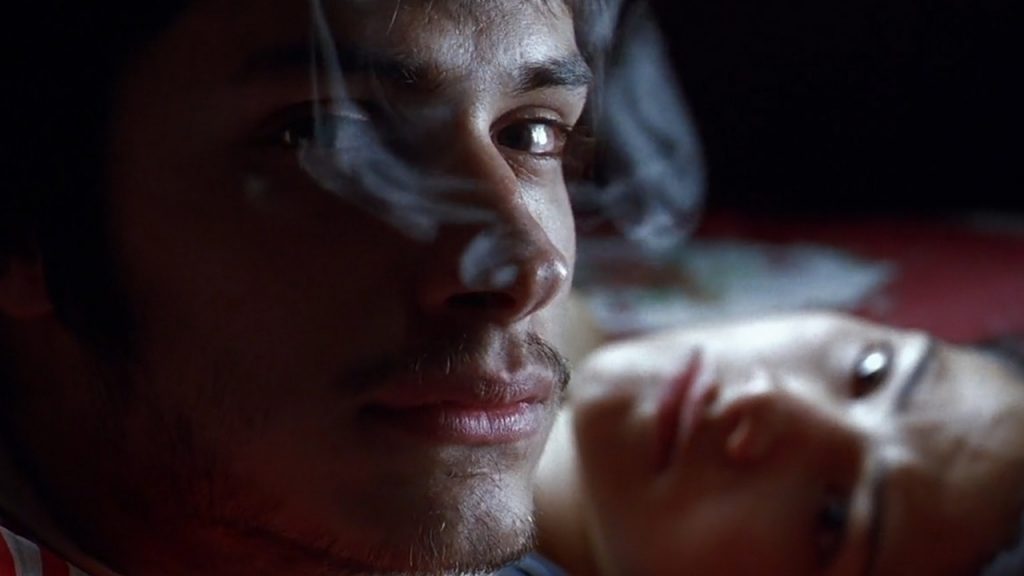

This truth, though surprising coming from one of the world’s most acclaimed directors, explains in part his storytelling sensibilities and his exhaustive attentiveness to technical and narrative minutiae - a trait many of his longtime colleagues praise for the results it yields on screen.
Ramiro amores perros movie#
Representing Mexico, the movie was nominated for (but did not win) the Best Foreign Language Oscar Award.Given the choice, Alejandro González Iñárritu would have picked music over film as his preferred outlet of artistic expression. The film suggests that those who live by violence, adultery and vanity will be judged for their sins and will be undone themselves by the same vices. All the characters live their lives intensely, hoping to succeed against all odds, but as one of them observes poignantly, “If you want to make God laugh, tell him your plans.

“Amores Perros” feels overwrought, by design. The movie’s text is a triptych whose overlapping structure that recalls Tarantino’s “Pulp Fiction,” and would become a staple of Inarritu’s work (“Babel”), as well as the notion of disparate characters linked by bizarre forces of fate and circumstance, and going through anguish and suffering in a grand, quasi-biblical way.Īs noted, the main intersection that brings these people together is a road accident, to which the movie comes back time and again. Scribe-novelist Guillermo Arriaga has described “Amores Perros,” which took no less than 36 drafts, as “fiercely human.” And indeed, the movie’s fierceness includes gruesome dog fighting, sudden bursts of violence, and intense, melodramatic suffering. Inarritu and his collaborators plunge through the story with passion, emotion, and melodrama, and end result is a film that’s fresh, shocking, violent, and profane, serving a useful reminder of the potential power of moving images when used in an unconventional way. The film’s recurring motifs are dog fights, both orchestrated and more spontaneous ones. Rich or poor, most of the characters in “Amores Perros” live in–or experience directly–extreme danger. In the third, a disenchanted revolutionary El Chivo (Emilio Echevarria), still grieving the loss of his daughter Maru (Lourdes Echevarria), is a street wanderer, who cares for street dogs and does dirty work for a corrupt cop. The second strand tracks Daniel (Alvaro Guerrero), a magazine editor who leaves his wife and daughters for Valeria (Goya Toledo), a famous actress-model, but their bliss turns to misery when Valeria’s beloved pooch Richie suffers an undignified death. A real killer, Cofi garners prize money for Octavio, which brings resentment from Jarocho (Gustavo Sanchez Parra), a street punk who keeps losing dogs. When he learns that Cofi killed a prize-winning dog in a street fight, he finds a way to finance his and Susana’s evacuation, thus enters the seedy world of dog fighting. Octavio, who’s in love with Susana, decides to save his sister-in-law from Ramiro’s abuse. The first plot focuses on a black dog named Cofi, that lives with a dysfunctional family that includes the teenager Octavio (Gael Garcia Bernal, bound to become an international star) his brother Ramiro (Marco Perez), an abusive hoodlum whose business is robbery, and Ramiro’s long-suffering and pregnant wife, Susana (Vanessa Bauche). Shaped as a trilogy, the yarn follows disparate individuals with dissimilar lives through a chain of events that converge in a bloody car crash. The Mexican film, whose title translates as “Life’s a Bitch,” has won festival awards around the world and probably would have claimed the Oscar for Best Foreign Language Film were it not for Ang Lee’s crowd-pleasing “Crouching Tiger, Hidden Dragon.”


 0 kommentar(er)
0 kommentar(er)
